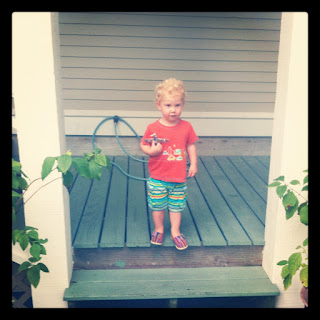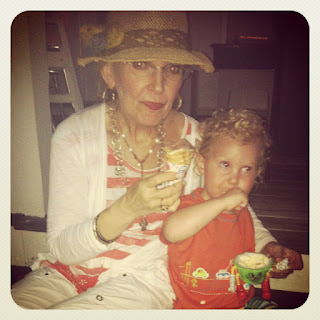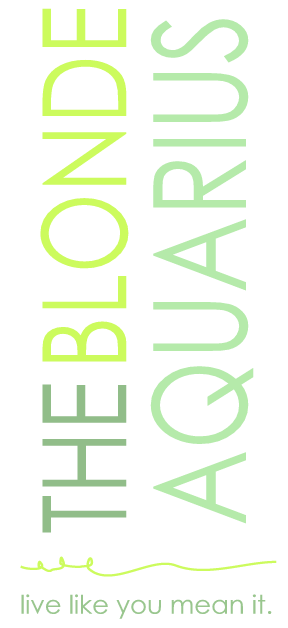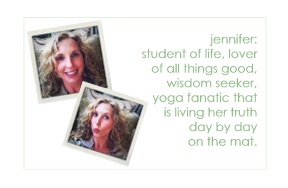“What
does an occupational therapist do
exactly?”
I get asked this question a lot…
I get asked this question a lot…
So,
here—in my own words (repeat—this is only my opinion) is my version of
what we do. Please keep in mind that I’m just beginning my second year of
school. I have 2 full more years and much more experience to be gained before I
feel that I’ll be adequately able to answer that question BUT—of course I
already have somewhat of an answer and of course I have my own opinion.
I
like to think of us (“us” being OTs) as sort of the bridge to where the East
meets the West. We live in a Western world driven by Western medicine and
medicine men. The Western concept stresses disease, illness, medicine, surgery,
and more science to help “fix” the world
and its inhabitants.
The
rehab team (which generally is comprised of occupational therapy, physical
therapy, speech therapy, recreational therapy, art therapy, music therapy, etc,
etc) comes from more of an Eastern mindset—especially
occupational therapy.
The Eastern concept stresses health, prevention, life
force, living in harmony with a mind/body connection, lifestyle, etc.
For
an even more in depth understanding of Western vs Eastern medicine, click here.
Our
association’s (AOTA) motto is “Living Life to the Fullest”.
Our
aim is to improve your quality of life while helping you to maintain your
autonomy, dignity, and independence for as long as possible.
YES,
we are science driven—we have to be in this day and age. Yes, we are
evidence-based and becoming so more and more because it is our job to prove to
the world (especially to our insurance companies) that what we do matters; that what we offer is
vital to your existence; that what we do aids in your healing process; that the
little stuff matters. And when I say the “little stuff” I’m referring to your
purpose, your interests, your individuality, what makes you tick…all of these things
are taken into account in our field so that we can best figure out how to help you be the best you you can be.
We
are client-centered and use the most holistic approach in the
whole of health care in regards to our treatment methods.
We
are, in fact, the hippies of health care.
What
does enhancing your quality of life look like?
It
really just depends.
We
work in every setting you can possibly think of….
Acute
care, outpatient, inpatient, private clinics, schools, mental health
facilities, home-health, nursing homes, community settings, prisons, homes,
wellness centers…
We
specialize in figuring out how to help you as an individual—not as a
diagnosis or just another patient that has something wrong with them.
For
example:
Let’s
say you fall and break the distal end of your radius (also called a colles’ fracture).
You are put in a volar forearm splint and ordered to see a PT and an OT
(physical therapist and occupational therapist).
The
PT will more than likely work with you on ROM (range of motion), strengthening
exercises, and anything that will help improve the physical aspect of your
wrist.
The
OT will ask you all sorts of questions—what are your hobbies? Your interests? Are
you a student or do you have a full time job? Do you live alone? What is it
that you both need and want to do on
a daily basis that you might not be
able to due to this broken bone?
And
based off of your answers, we will devise a treatment plan that will
incorporate all of those things combined.
If
you happen to be a teacher and need to continue teaching with a broken wrist we
(OT) will come up with ideas about how to allow you to continue to teach using
compensatory measures.
We
might come to your school and look at your class room. We might decide that it
would be best if we re-arrange your desk and chair to meet the demands of your
work with this broken bone. We might come up with new ways you can teach your
class using just one arm or incorporating your hurt wrist.
What
if your hobby is gardening? We would work with you until we came up with some
sort of method that would allow you to continue to garden with your broken
bone. Maybe we’ll make a universal cuff or devise some type of orthotic device
that would allow you to continue to garden using your broken wrist as
assistance to your other arm.
The
list is endless.
This
is why it’s hard to explain what we do because we really do it all.
Not
one treatment plan is the same because we are all so different and each have
different needs and personalities and what we might do for one person isn’t the
same as what we’ll do for another.
Another
example…
Say
you have a little boy who has been diagnosed with autism…he is 5 years old and
is not at all up to speed in his classroom and is having difficulty adjusting
to the new teacher and class—he’s been acting up in almost self-injurious ways
and his mom takes him to the Pediatrician.
The
pediatrician is going to examine him and put him on some medicine and look at
the other health concerns that go along with autism.
That’s
pretty much it.
Hopefully,
if he’s a good pediatrician, he’ll refer him to an occupational therapist.
Once
the child has been referred to occupational therapy we might:
Provide
interventions to help a child appropriately respond to information coming
through the senses. Intervention may include swinging, brushing, playing in a ball
pit and a whole gamut of other activities aimed at helping a child better
manage his body in space (also called proprioception).
Facilitate
play activities that instruct as well as aid a child in interacting and
communicating with others. For the OT specializing in autism, this can
translate specifically into structured play therapies, such as Floortime, which
were developed to build intellectual and emotional skills as well as physical
skills.
Devise
strategies to help the individual transition from one setting to another, from
one person to another, and from one life phase to another. For a child with
autism, this may involve soothing strategies for managing transition from home
to school; for adults with autism it may involve vocational skills, cooking
skills and more.
Develop
adaptive techniques and strategies to get around apparent disabilities (for
example, teaching keyboarding when handwriting is simply impossible; selecting
a weighted vest to enhance focus; etc.) (to view source, click here)
We also might
incorporate hippotherapy (horse therapy). Often clients with autism
have poor muscle tone (low tone), manifested as poor posture and also limited
motor control and coordination. The horse’s three-dimensional movement provides
sensory stimulation to muscles and joints (called proprioception), impacts the
balance and movement sense detected by sensory receptors in the inner ear
(called the vestibular system), and provides varied tactile (touch) experiences
when the client rubs or pats or hugs the horse, feels the heat from the horse’s
body and feels the effects of the natural environment (sun/wind). The therapist
can address communication goals by asking the rider to follow simple or
multi-step directions.
So,
now you might see why I envision the East meeting the West when I think of OT
as compared to the rest of health care.
BUT,
it is important to note that we do work best in treatment teams—meaning we need
the other disciplines to help us achieve our ultimate purpose which is figuring
out the BEST care for you as an individual.
We
love our PT’s (physical therapists) and our ST’s (speech therapists) and our nurses and it is
imperative that we work together to achieve the best outcome for our clients.
*we rely heavily on our nurses and they are a vital part of our team as well*
*we rely heavily on our nurses and they are a vital part of our team as well*
We (OT’s)
are team oriented, generally laid back, creative, go-with-the-flow, passionate,
people-loving, empathetic, and caring individuals who long to make a difference
in the world and who care a great deal for the people in this world. There is
obviously a variety of traits due to everyone’s differing personalities but in
general I think it’s safe to use the above adjectives when describing us.
This
job is obviously not for everyone.
In
fact, although we do make a decent living, if your motive for being an OT or
becoming an OT is for the money, then you should change directions right now.
Drop out of school if you’re already in school—or figure out another path.
No
amount of money will ever be worth what we do on a daily basis. So if you’re in
it for the money, then you’re going to be miserable. Because let’s face it—who wants
to work with different personalities and different problems everyday if you don’t love people?! I
can guarantee you that you don’t.
I
hope, in some small way, this has helped with your conception of what an
occupational therapist is and what we do. And this is only scratching the
surface.
I
can tell you that I know I picked the best career for me when I choose this
field many, many years ago—and I still feel just as strongly about my calling
to be an OT as I did when I was 23.
If
you, or someone you know, may be interested in the field of Occupational
Therapy, please feel free to contact me!
I
also intend on writing about why the Occupational
Therapy program only requires a master’s degree to practice and the Physical
Therapy program has gone on to a doctorate degree. I also intend on explaining,
in more depth, the major differences between our fields as they are commonly
linked together and why hardly any layman can tell you the difference between us.
But
this is quite enough for today.
I hope
you all enjoy your weekend to the fullest!
LET’S
GO USA!!!!











































































